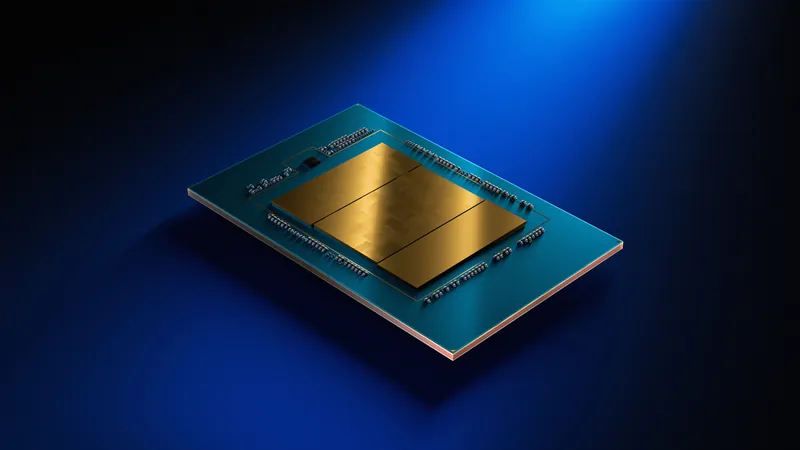
Is This the End of Silicon Chips? The Revolutionary Bismuth Chip Outpaces Intel by 40%!
2025-05-11
Author: Nur
Groundbreaking Transistor Design from China
Hold onto your hats! Researchers at Peking University have unveiled an astonishing new transistor design that could send shockwaves through the semiconductor industry. This innovative chip, made from the two-dimensional material bismuth oxyselenide, is turning the tables on traditional silicon processors.
The Game-Changer: GAAFET Architecture
The secret sauce? A cutting-edge gate-all-around (GAAFET) architecture that wraps the transistor's gate completely around the source. Unlike traditional FinFET designs, which only provide partial gate coverage, this full-wrap design significantly boosts performance by minimizing energy leakage and enhancing current control.
A Leap Ahead: 40% Boost in Speed!
According to their findings published in Nature Materials, this groundbreaking 2D GAAFET design could potentially outperform leading silicon chips, eclipsing even Intel's latest 3nm processors by a staggering 40% in speed, all while consuming 10% less power! Imagine laptops that are faster and more energy-efficient—this innovation could make that a reality.
Silicon Chips at a Crossroads?
The researchers claim this is the fastest, most efficient transistor ever created. Professor Peng Hailin, who leads the project, likens their development to changing lanes in the fast lane of chip innovation, implying that traditional materials have hit their limits.
Why Bismuth? The Next Step in Semiconductor Evolution
The breakthrough comes not just from the design but also from two newly developed bismuth-based materials: Bi₂O₂Se as the semiconductor and Bi₂SeO₅ as the gate dielectric. These materials boast low interface energy, leading to reduced defects and allowing electrons to flow with near-zero resistance. Imagine the efficiency—like water gliding effortlessly through a smooth pipe!
A Bright Future for Transistors?
Backed by rigorous testing and advanced density functional theory calculations, this new transistor can be integrated using existing semiconductor manufacturing processes, setting the stage for a seamless transition into the industry's future.
Final Thoughts: A New Era?
With the microprocessor landscape possibly shifting towards bismuth-based chips, one must wonder: Are we witnessing the twilight of silicon dominance? As researchers forge ahead, the implications of their work could redefine technology as we know it. Buckle up; the chip race is only getting started!




 Brasil (PT)
Brasil (PT)
 Canada (EN)
Canada (EN)
 Chile (ES)
Chile (ES)
 Česko (CS)
Česko (CS)
 대한민국 (KO)
대한민국 (KO)
 España (ES)
España (ES)
 France (FR)
France (FR)
 Hong Kong (EN)
Hong Kong (EN)
 Italia (IT)
Italia (IT)
 日本 (JA)
日本 (JA)
 Magyarország (HU)
Magyarország (HU)
 Norge (NO)
Norge (NO)
 Polska (PL)
Polska (PL)
 Schweiz (DE)
Schweiz (DE)
 Singapore (EN)
Singapore (EN)
 Sverige (SV)
Sverige (SV)
 Suomi (FI)
Suomi (FI)
 Türkiye (TR)
Türkiye (TR)
 الإمارات العربية المتحدة (AR)
الإمارات العربية المتحدة (AR)